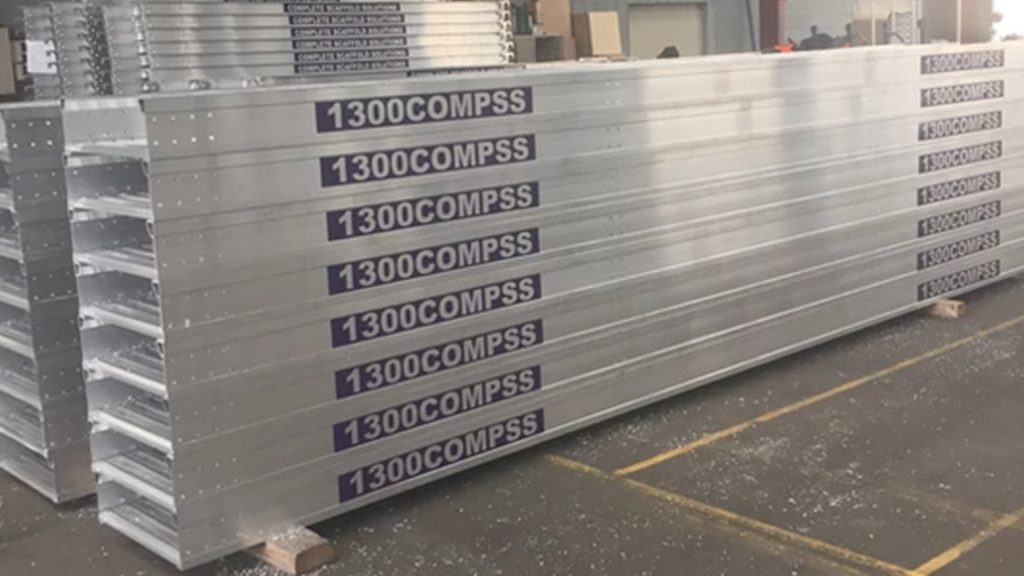
Four Amazing Scaffold Facts
Most of us just walk past scaffolding without a look. However, this equipment is an unassuming but essential part of the construction process, providing access to work areas at height. Even though it may seem simple at first sight, there’s definitely more to scaffolding than meets the eye. In this article, Complete Scaffold Solutions uncover some surprising and intriguing facts that will make you see these important structures in a new light.
1. When Was Scaffolding First Used?
The history of scaffolding is almost as long as the history of mankind itself. A bold claim, that’s for sure. But the fact is that as soon as we want to reach heights above ourselves, we need help. Researchers believe that as early as 17,000 years ago, our ancestors built scaffolding to help them create their paintings high up on cave ceilings.
Scaffolding is also thought to have been used by the ancient Egyptians in the construction of their world-famous pyramids over 4,500 years ago. However, the first actual record of a scaffolding structure is found in Greece in the 5th century BC. To be precise, it was found on a wine cup with various images of an ancient bronze foundry. And if you look closely, you will spot the image of a warrior statue surrounded by wooden scaffolding.
2. Where Did Scaffolding Originate?
The ancient Greeks and Egyptians were not the only people who knew about scaffolding back in the day. In ancient China, too, scaffolding structures were used to construct a wide range of buildings. And that’s not all. It is even believed that the first steps towards modern scaffolding were taken there. For example, scaffolding made of bamboo canes tied together was used to build early sections of the Great Wall.
3. When Was Metal Scaffolding Used?
Speaking of scaffolding materials: did you know that metal scaffolds weren’t even a thing before the 20th century? While scaffolding today is mostly made of metal, be it steel or aluminium, back in the day wood or bamboo were the most commonly used materials in scaffolding.
It was not until the 20th century that wooden scaffolding was gradually replaced by steel scaffolding.
As population density increased, so did the demand for construction projects – and the need for timber. The result was fairly predictable: wood began to decline rapidly in many regions and companies were forced to look for new materials. With industrialisation, this new material for scaffolding was soon found: steel.
4. Who Was The Best Scaffolder Ever?
Sure, it’s almost impossible to pick. But at least one hot contender for the title would have to be the Italian Renaissance artist, Michelangelo. Not only did he make a name for himself as a painter, sculptor and architect, but also as an exceptionally skilled scaffolder.
Masterpieces such as his fresco on the 20-metre-high ceiling of the Sistine Chapel in the Vatican would hardly have been possible without scaffolding. But standard scaffolding, erected from the ground, was out of the question for this task. This was because Michelangelo’s client, Pope Julius II, insisted that the painting work should not disturb the religious services in the Sistine Chapel. At the same time, scaffolding suspended from the ceiling of the chapel would leave unsightly holes in Michelangelo’s emerging ceiling painting. Michelangelo’s greatest challenge was to anchor the scaffolding in a way that would not damage his ceiling painting or the existing paintings on the walls of the Sistine Chapel. So, Michelangelo came up with an ingenious solution: the interconnecting walkways and platforms were not anchored in the ceiling, but in the walls and above the existing paintings by other Renaissance artists. In this way, the scaffolding was completely beneath the area where Michelangelo was to paint, and could be moved around the chapel to each new painting section. A remarkable achievement, especially when you consider that more than 500 years ago Michelangelo hardly had the facilities of modern scaffolding.

Get In Touch With The Best Scaffolding Company
Now that the history lesson is complete, it’s time to get to work. Complete Scaffold Solutions provides affordable access solutions to clients around the country. From sale and hire of steel and aluminium scaff to fabrication of custom made swing stages, you can trust us to deliver the goods. Using only 100% Aussie materials, our proprietary brand of high quality scaffolding will ensure your project is completed on time and on budget as well as helping your workers get home safe at the end of the day.
Simply pick up the phone and give us a tingle today for unbiased advice and professional service.
